When it comes to using a wheelchair as a seat in a motor vehicle, the wheelchair needs to fulfill 2 main standards. These safety standards are there not only to protect the wheelchair user but also those who are also in the motor vehicle. Whether in the USA or internationally, if the wheelchair is intended to be used as a seat in a motor vehicle, it must have passed the WC19 or ISO 7176-19 test.
| ANSI/RESNA (USA) | ISO (International) | |
| Wheelchairs | WC19: Wheelchairs used as seats in motor vehicles | ISO 7176-19: Wheeled mobility devices for use as seats in motor vehicles |
| Wheelchair Seating Systems | WC20: Wheelchair seating systems for use in motor vehicles | ISO 16840-4: Seating systems for use in motor vehicles |
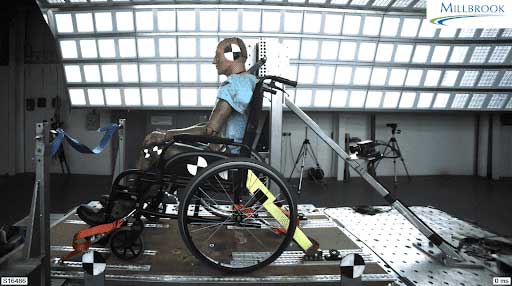
Wheelchair Tiedown Occupant Restraint System (WTORS)
The WTORS is made up of two parts. First is the four point strap tiedown that secures the wheelchair and secondly is the belt system used to restrain the user in the chair in the event of a crash. These 2 systems ensure that the wheelchair does not move in the vehicle during transportation and also protects the user from being thrown out of the vehicle.
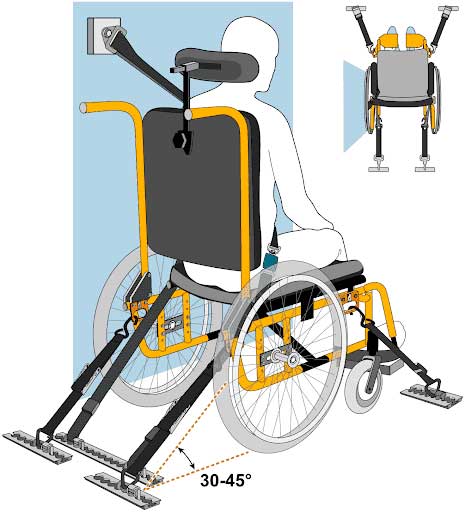
Wheelchair Tiedown
The four point tiedown straps are what anchors the wheelchair onto the floor of the motor vehicle so that the wheelchair doesn’t move during an accident. In the USA, a wheelchair that can be safely transported in a motor vehicle will have a WC19 or WC20 logo on the wheelchair frame:
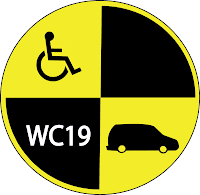
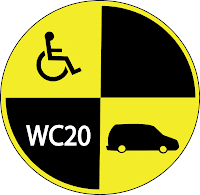
Wheelchairs that have achieved this certification will have stickers on the wheelchair indicating the 4 points where the wheelchair should be tied downs securely:
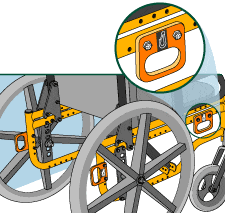
- The front 2 straps should be angled outward to add lateral stability. The front straps prevent the wheelchair from tipping over when the motor vehicle turns left or right.
- The rear 2 straps should be parallel to the direction of vehicle travel. The rear straps ensure that the user will not fly forward by holding the wheelchair back.
- All 4 straps need to be tight in order to be effective.
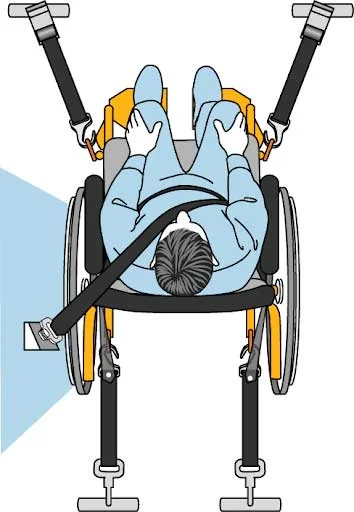
Docking systems
An alternative to the four point tiedown straps is an automatic docking system such as the Dahl Docking System. These can be specially installed into private vehicles and used by a wheelchair user who drives without assistance. Not every wheelchair model has been crash tested with a docking system. Ensure that your wheelchair is compatible with a docking system.
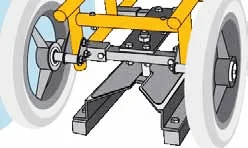
Occupant Restraint System
In addition to any postural support belts already used by the occupant in their wheelchair, a crash tested lap and shoulder belt are used to keep the occupant safely in the chair in the event of a crash. Unlike the postural support belts which are only attached to the wheelchair, the lap and shoulder belt is attached to the vehicle. The lap or postural support should be angled between 45-75° from the wheelchair frame. This belt is there to hold the user in the chair if the car were to suddenly stop and to protect the joint.
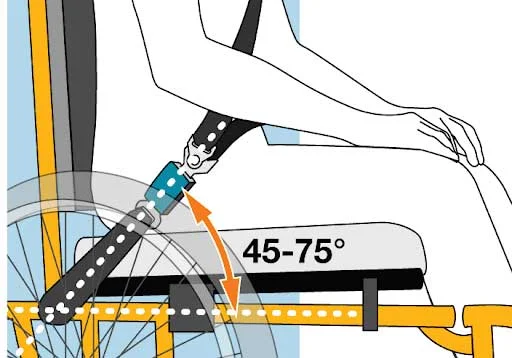
The shoulder belt (as shown below) is used to restrain both the wheelchair and the user’s upper body, similar to a regular car seat belt. Ensure that this belt goes across the shoulder and along the center of the chest. This belt should meet the pelvic belt and not sit on the armrest. This belt is also attached to the vehicle.
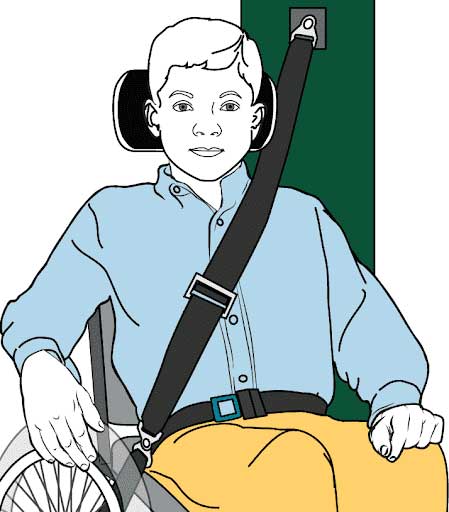
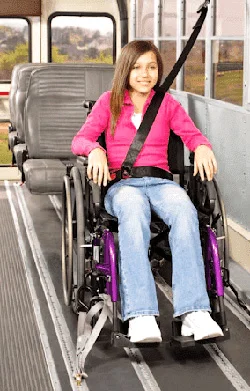
Final considerations when transporting a wheelchair user in a vehicle
In the event that you are planning to transport a wheelchair user in a motor vehicle, here are some final considerations:
- Adjust the backrest position to a vertical angle of 30° or less. Where possible, the backrest should not be in a reclined or tilted position.
- Remove any hard tray tables and store them securely in the vehicle to reduce chance of injury.
- A properly positioned headrest can play a big part to protect the wheelchair user in a rear impact.
- Secure medical and other equipment to the wheelchair or the vehicle.
Learn more about wheelchair safety:
https://www.karmamedical.com/wheelchair-safety/

 Global
Global